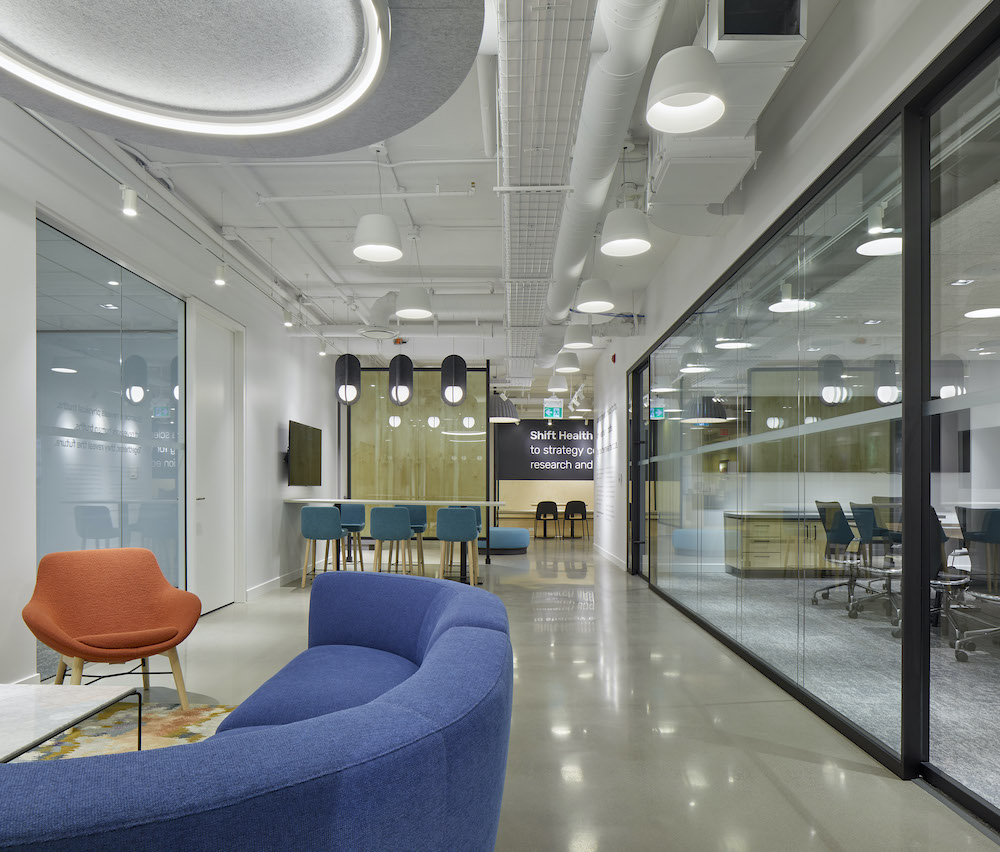Inger Bartlett of Bartlett & Associates explores why the office landscape needs to change in order to accommodate the working styles and preferences of employees.
– Stay tuned as we share more 2023 trends for the entire month of December & beyond –

After two years of disruption, when remote and hybrid working became the norm for so many, we are now seeing a return to the physical office, either by choice or demand. In either case, it’s obvious that the office landscape needs to change in order to accommodate the working styles and preferences of employees from multiple generations who are now used to and appreciate the comfort of the home office.
While the open-concept office has been the main convention for many years, we’re anticipating a call for office designs to become even more flexible and adaptable – with a heavy emphasis placed on opportunities for privacy and focused work. Employers will need to offer a diversity of working setups that range from dynamic spaces that foster collaborative creativity and breakout areas where small groups can gather to, perhaps most importantly, zones specifically delegated for the individual.
We won’t be returning to the days of private offices and endless seas of cubicles, but will instead better balance collaboration and privacy within the context of the modern-day office environment. Adapting for the need for privacy does not require a complete overhaul of existing spaces but instead can be managed with a few key moves and insertions.

It’s paramount to ensure that employees can plug-in and perform at areas other than an assigned desk. This could mean incorporating freestanding booths accessible to only a limited number of users at a time. Teknion has a number of stylish pods and mini-rooms that are an ideal and relatively easy-to-introduce privacy-on-demand solution. They range in size from one-person booths to small-scale rooms that can be arranged with sofas and lounge chairs, high-top tables and stools or tables and chairs. Equipped with power, lighting and temperature control, they are like a microsystem within a larger office space; and there are plenty of options to finish the exterior to match an existing design plan.
Providing furniture that is both comfortable and compatible to working is another way to create suitable moments for solitary tasks. Soft-seating like the modular Garner series from Keilhauer’s Elevate collection is a great example: Comprised of seating and table modules that can be combined together to suit a range of needs, it offers employees the freedom to select where one wants to work and with who. For dedicated communal spaces like kitchens or lounges, carving out a corner by furnishing it with a couple of high-backed chairs and side tables signals to employees that they can settle down for focused work without being completely removed from the social dynamic of the office.
If there is a plus to be pulled from the pandemic, it’s that antiquated methods of working have been abandoned and we now have the chance to design office settings that better serve those that use them. No two people work in the same way, so expecting a static arrangement of single desks to serve differing needs is no longer appropriate nor necessary. Employees need enticement to return to the office and supplying them with spaces that support a range of working behaviours can go a long way to succeeding with that. At the end of the day, what employers should offer their employees is choice.

